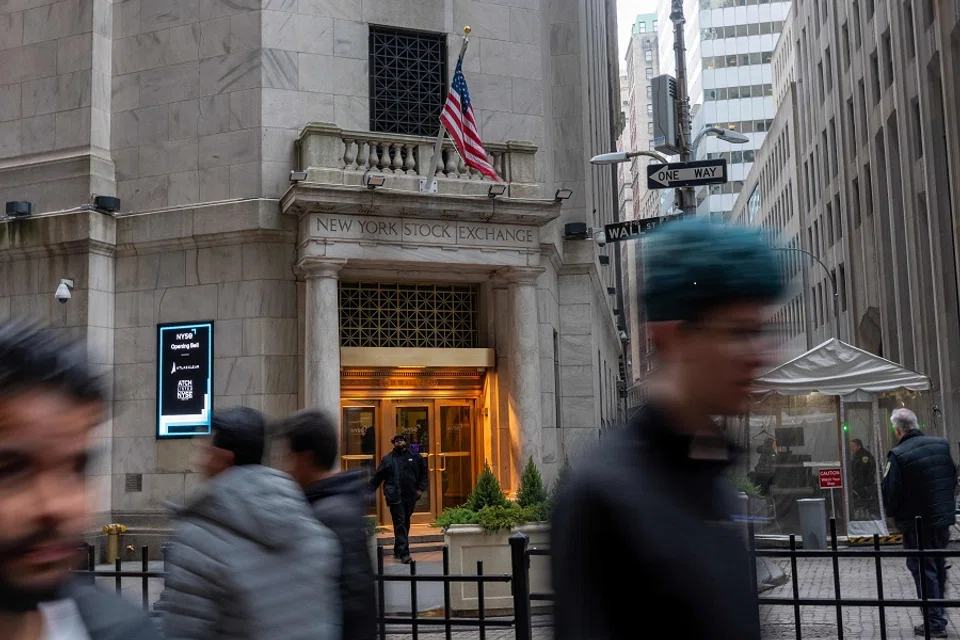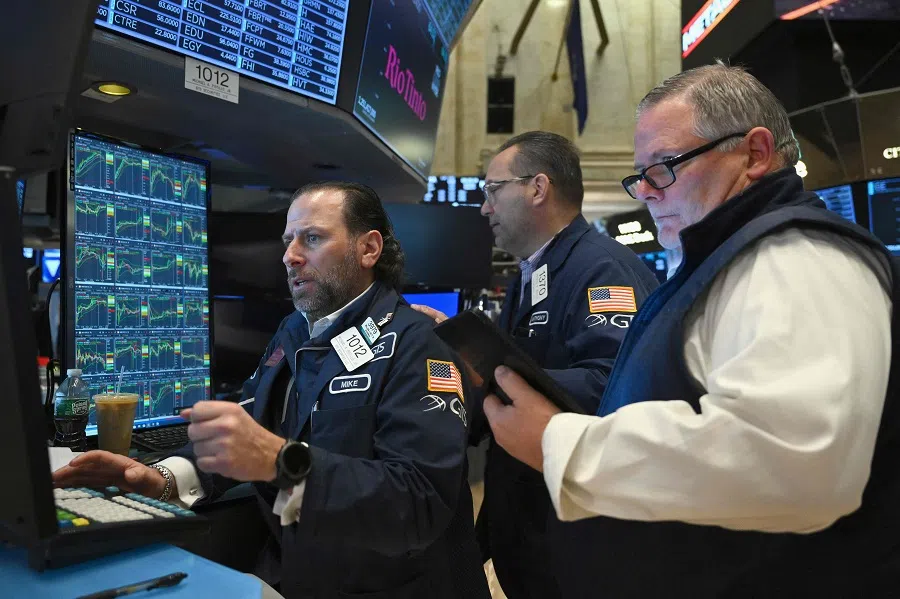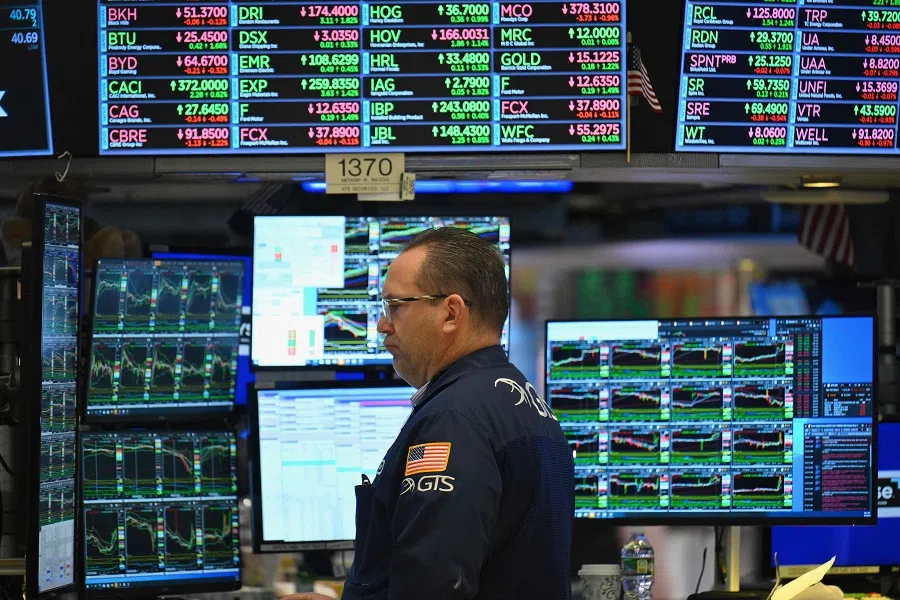US economy continues to lead the world
Not only did the US manage to stave off a decline in 2023, it even achieved an annual GDP growth of 2.5%, with its stock market soaring to an all-time high. Commentator Jin Jian Guo notes that the history of the development of the US economy proves how crucial the entrepreneurial spirit is for an economy, helping the US keep its spot as the leading economy in the world.

In 2023, the US economy was a dominant leader among major economies; not only did it stave off a decline, it even achieved an annual GDP growth of 2.5%.
Europe's economy was in a slump and saw hardly any growth as a result of the unusual occurrence of a poor German economy. Japan's economy was also disappointing, and in 2023, Germany overtook Japan as the third largest economy in the world. Their nominal GDPs were US$4.4 trillion and US$4.2 trillion respectively.
IMF chief economist Pierre-Olivier Gourinchas said the US economy was "especially a bright spot" during the release of the International Monetary Fund (IMF) World Economic Outlook report.
The Organisation for Economic Co-operation and Development (OECD) expects the growth prospects for the global economy to improve in 2024, mainly driven by the optimistic outlook for the US economy. An article by Ross Douthat titled "Only America Can Save the Future" published in The New York Times reflected the stance of a fully confident American.
Stellar grades for the US economy
Firstly, US GDP growth exceeded expectations. After the pandemic, the US experienced the best economic recovery globally. The pandemic caused high inflation in the US, hitting 1.7% in February 2021 and rising to 9.1% in June 2022. On 16 March 2022, the US Federal Reserve (Fed) enacted an interest rate hike, followed by another 11 hikes in the next 17 months, with the benchmark overnight interest rate raised to between 5.25% and 5.5%.
According to economic principles, an increase in interest rates would weigh down on consumption and investment, and this is the basis upon which many organisations predicted that the US economy would go into a recession in 2023. In October 2022, a model of the US economy by the chief US economist for Bloomberg Economics showed a 100% chance of a recession happening in 2023.

The result however was that inflation in the US kept going down while GDP growth kept going up. From this perspective alone, the US economy has achieved a "soft landing" - a decrease in inflation without causing unemployment to go up drastically and GDP growth to go negative.
US GDP growth reached 2.5% in 2023. In late January 2024, the US Department of Commerce stated that the personal consumption expenditure price indexes, the measure of inflation favoured by the Fed, climbed 0.2% month-on-month in December 2023, with annual inflation at 2.6%. In 2023, the number of non-farm jobs increased by an average of 225,000 per month, and unemployment for December 2023 reached 3.7%. According to these measures, it can at least be said that in 2023, the US economy was able to attain a soft landing.
Secondly, consumption and investment were strong. Consumer spending accounts for 70% of total spending in the US economy, and in December 2023, the University of Michigan announced that the Consumer Sentiment Index rose from 61.3 at the end of November to 69.7 for December. This is because Americans are confident about economic prospects. All five index components rose for December. On 19 January 2024, the University of Michigan's consumer sentiment for the US rose to 78.8.
In Q3 2023, real private manufacturing construction investment reached its highest level on record since 1958.
Propping up US consumption is the higher rate of employment and rising income. With inflation falling from its peak in 2022, nominal wage growth significantly increased, while real wage growth started to pick up in 2023. In the year ending November 2023, real wage for all workers increased by 0.8%, and by 1.1% for 80% of production and non-supervisory workers. The various powerful labour unions were able to spur wage growth for American workers by reducing inequality and raising salaries; the US autoworker strike in 2023 is one example.
In March 2023, the White House released an interactive map that showed an investment of more than US$470 billion in the private sector since January 2021. These investments towards semiconductors, clean energy as well as electric vehicles and batteries are the industries that the US urgently needs to develop. In Q3 2023, real private manufacturing construction investment reached its highest level on record since 1958. This historic prosperity of the manufacturing industry is a direct positive impact of the Inflation Reduction Act.
US stock market dominates
The US stock market, which is a barometer for the US economy, soared to an all-time high in 2023, with the S&P 500 increasing by 24%, a mere 0.6% from the historic high posted in January 2022. The Dow Jones rose by 1.4% breaking 37,000 points for the first time, setting seven record closes in the last days of 2023, and has since broken past the 38,000 mark. The Nasdaq Composite rose by 43%, centred on the fervour around artificial intelligence (AI) and big tech stocks, riding it to the best performance since 2020.

Spurring this rise are the Magnificent Seven big tech stocks: Apple, Microsoft, Alphabet, Amazon, Nvidia, Tesla and Meta Platforms. In 2023, the Magnificent Seven collectively rose by 75%, leaving the other 493 companies in the S&P 500 in the dust. The remaining companies rose by just 12%, while the index as a whole rose by 23%. According to data by Goldman Sachs, the value of the Magnificent Seven has risen to account for 30% of the value of the S&P 500; this is nearly as much as any combination of seven stocks across history.
The Chinese site of Nikkei referenced data from QUICK FactSet to show the combined market value of global businesses in US dollars. The combined value of US companies stood at US$51 trillion, an increase of US$1.4 trillion from the end of 2023. As of 2 February, it accounted for 48.1% of total global market capitalisation, an increase of 1.6 percentage points year-on-year, setting a record high since September 2003.
... generative AI technology could boost US productivity by 1.7% to 3.5% and grow the US GDP between US$477 billion and US$1 trillion in annual value over the next ten years.
Going into 2024, US stocks remain on the rise. On 15 February, the positive outlook from investors towards the economy once again spurred the rise of the Dow Jones by 0.9%. The S&P 500 rose by 0.6%, setting its 11th record for the year while the Nasdaq Composite gained 0.3%.
The constant rise of the Magnificent Seven is an external showing of the meteoric rise of the US's AI technology. Generative AI is changing the US economy. On 10 January, Cognizant Impact released a research study that claimed that generative AI could improve operational efficiency, create new streams of revenue, innovate products and services, and ultimately redefine businesses.
Based on business adoption rates, generative AI technology could boost US productivity by 1.7% to 3.5% and grow the US GDP between US$477 billion and US$1 trillion in annual value over the next ten years.
OpenAI introduced a new technology called Sora, which uses AI to produce high-quality videos based on textual prompts. Sora would take text input from the user to generate a detailed and vibrant video using AI.

Google released Gemini 1.5, the most capable version of its AI model; a distinctive feature of the model is its long-context understanding and ability to process up to 1 million tokens (tokens refer to a chunk of text generated by the model), which far outstrips GPT-4's long-context understanding. Gemini 1.5 can process a wider range of information from a single prompt.
However, GPT-4's complex algorithm has undergone broad training with adjustments made for real-world applications - it displays a high level of nuance, creativity and reliability in its generated text.
The history of the development of the US economy proves how crucial the entrepreneurial spirit is for an economy.
US Magnificent Seven demonstrates entrepreneurial spirit
The development of AI for the US has not yet reached its ceiling, which begs the question: why is it that the US can constantly innovate? The answer lies in its entrepreneurial spirit.
Renowned economist Joseph Schumpeter opined that without innovation, there would not be entrepreneurs, and without the success of entrepreneurs, there would be no profits spurred on by capitalism and no impetus to advance capitalism. Schumpeter conducted studies on different economic models, and strongly believed that capitalism has unique advantages in increasing productivity and encouraging economic growth.
The history of the development of the US economy proves how crucial the entrepreneurial spirit is for an economy. The US's Magnificent Seven stocks demonstrate once more the enormous force that an entrepreneurial spirit is for the US. It is a pillar of the US economy, helping it keep its spot as the leading economy in the world.

What does it mean to be a global leader? The US economy is growing faster than any other developed economy, and the massive scale of the US's GDP spurs economic growth for other countries. For instance, Mexico has become the largest exporter to the US; that is to say, the more the US imports from Mexico, the more it spurs the Mexican economy.
In 2024, the US economy continues its soft landing, bringing along with it a soft landing for the global economy as the Fed delays the lowering of interest rates, which would have an anchoring effect to continue suppressing global inflation. Meanwhile, the development of AI in the US will help unfold another horizon for global technological development and innovation.
This article was first published in Lianhe Zaobao as "美国经济继续引领世界".





![[Big read] China’s 10 trillion RMB debt clean-up falls short](https://cassette.sphdigital.com.sg/image/thinkchina/d08cfc72b13782693c25f2fcbf886fa7673723efca260881e7086211b082e66c)